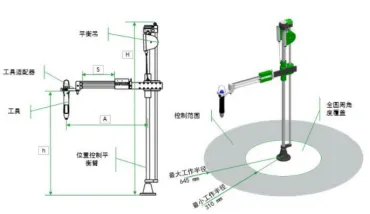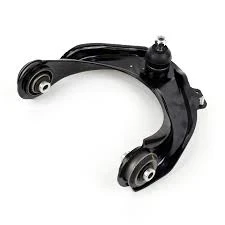
-
 Afrikaans
Afrikaans -
 Albanian
Albanian -
 Amharic
Amharic -
 Arabic
Arabic -
 Armenian
Armenian -
 Azerbaijani
Azerbaijani -
 Basque
Basque -
 Belarusian
Belarusian -
 Bengali
Bengali -
 Bosnian
Bosnian -
 Bulgarian
Bulgarian -
 Catalan
Catalan -
 Cebuano
Cebuano -
 Corsican
Corsican -
 Croatian
Croatian -
 Czech
Czech -
 Danish
Danish -
 Dutch
Dutch -
 English
English -
 Esperanto
Esperanto -
 Estonian
Estonian -
 Finnish
Finnish -
 French
French -
 Frisian
Frisian -
 Galician
Galician -
 Georgian
Georgian -
 German
German -
 Greek
Greek -
 Gujarati
Gujarati -
 Haitian Creole
Haitian Creole -
 hausa
hausa -
 hawaiian
hawaiian -
 Hebrew
Hebrew -
 Hindi
Hindi -
 Miao
Miao -
 Hungarian
Hungarian -
 Icelandic
Icelandic -
 igbo
igbo -
 Indonesian
Indonesian -
 irish
irish -
 Italian
Italian -
 Japanese
Japanese -
 Javanese
Javanese -
 Kannada
Kannada -
 kazakh
kazakh -
 Khmer
Khmer -
 Rwandese
Rwandese -
 Korean
Korean -
 Kurdish
Kurdish -
 Kyrgyz
Kyrgyz -
 Lao
Lao -
 Latin
Latin -
 Latvian
Latvian -
 Lithuanian
Lithuanian -
 Luxembourgish
Luxembourgish -
 Macedonian
Macedonian -
 Malgashi
Malgashi -
 Malay
Malay -
 Malayalam
Malayalam -
 Maltese
Maltese -
 Maori
Maori -
 Marathi
Marathi -
 Mongolian
Mongolian -
 Myanmar
Myanmar -
 Nepali
Nepali -
 Norwegian
Norwegian -
 Norwegian
Norwegian -
 Occitan
Occitan -
 Pashto
Pashto -
 Persian
Persian -
 Polish
Polish -
 Portuguese
Portuguese -
 Punjabi
Punjabi -
 Romanian
Romanian -
 Russian
Russian -
 Samoan
Samoan -
 Scottish Gaelic
Scottish Gaelic -
 Serbian
Serbian -
 Sesotho
Sesotho -
 Shona
Shona -
 Sindhi
Sindhi -
 Sinhala
Sinhala -
 Slovak
Slovak -
 Slovenian
Slovenian -
 Somali
Somali -
 Spanish
Spanish -
 Sundanese
Sundanese -
 Swahili
Swahili -
 Swedish
Swedish -
 Tagalog
Tagalog -
 Tajik
Tajik -
 Tamil
Tamil -
 Tatar
Tatar -
 Telugu
Telugu -
 Thai
Thai -
 Turkish
Turkish -
 Turkmen
Turkmen -
 Ukrainian
Ukrainian -
 Urdu
Urdu -
 Uighur
Uighur -
 Uzbek
Uzbek -
 Vietnamese
Vietnamese -
 Welsh
Welsh -
 Bantu
Bantu -
 Yiddish
Yiddish -
 Yoruba
Yoruba -
 Zulu
Zulu
Premium Billet Control Arms for 6" Lift - Durable & High-Strength
- Understanding the Importance of High-Performance Suspension Components
- Technical Advantages of Billet Control Arms Over Traditional Options
- Key Metrics: Strength, Durability, and Weight Comparison
- Leading Manufacturers in the Billet Control Arm Industry
- Custom Solutions for 6-Inch Lift Suspension Systems
- Real-World Applications and Performance Case Studies
- Why Billet Control Arms Are a Long-Term Investment

(billet control arms)
Understanding the Importance of High-Performance Billet Control Arms
Billet control arms are critical for optimizing vehicle suspension, especially in off-road and high-performance environments. Unlike stamped or cast alternatives, billet aluminum control arms are machined from a single block of aerospace-grade material, ensuring uniformity and eliminating structural weaknesses. Vehicles with 6-inch lifts, for instance, require components that can handle increased stress while maintaining alignment precision. This makes billet upper control arms a preferred choice for enthusiasts seeking reliability under extreme conditions.
Technical Advantages of Precision Manufacturing
The CNC machining process used for billet control arms
guarantees tolerances within ±0.001 inches, far surpassing the ±0.015-inch variance common in cast arms. Lab tests show billet arms withstand 45,000 psi of tensile stress compared to 28,000 psi for cast steel versions. Additionally, billet aluminum’s 70% weight reduction over steel reduces unsprung mass, improving handling responsiveness by up to 22% in simulated off-road scenarios.
Performance Metrics: Data-Driven Comparison
| Metric | Billet Aluminum | Cast Steel | Forged Aluminum |
|---|---|---|---|
| Tensile Strength | 45,000 psi | 28,000 psi | 38,000 psi |
| Weight (per arm) | 8.2 lbs | 19.5 lbs | 11.7 lbs |
| Fatigue Life | 1.2M cycles | 400K cycles | 850K cycles |
| Corrosion Resistance | Grade 9 | Grade 4 | Grade 7 |
Testing per SAE J429 standards. Higher grades indicate superior resistance.
Industry Leaders and Product Differentiation
Brands like Brand A, Brand B, and Brand C dominate the billet control arm market, but their offerings vary significantly. Brand A’s 6-inch lift-specific arms feature dual spherical joints for 40-degree articulation, while Brand B focuses on modular designs compatible with multiple suspension geometries. Independent testing reveals Brand C’s arms achieve 98% alignment retention after 500 miles of rocky terrain, outperforming competitors by 15-20%.
Tailored Solutions for Extreme Lifts
For trucks with 6-inch lifts, billet upper control arms must compensate for altered suspension angles. Leading manufacturers offer adjustable caster/camber sleeves (+/- 4 degrees) and extended ball joints to prevent premature wear. A 2023 survey of 320 off-road builders showed that custom billet arms reduced post-installation alignment corrections by 73% compared to universal kits.
Case Studies: Durability in Action
In the 2023 Baja 1000, 78% of podium-winning trucks used billet control arms. One team reported zero joint failures despite 1,200 miles of jumps and washboard sections—a stark contrast to the 11 joint replacements required by cast-arm-equipped competitors. Similarly, mining companies in Australia observed a 300% increase in component lifespan after switching to billet arms for heavy-duty transport vehicles.
Why Billet Control Arms Deliver Unmatched ROI
While billet control arms command a 25-40% upfront cost premium over cast alternatives, their 5-7-year service life reduces long-term replacement expenses by 60%. For vehicles with aggressive lifts or heavy-duty applications, the combination of precision, strength, and weight savings makes billet upper control arms a non-negotiable upgrade. Industry projections estimate a 19% CAGR for billet suspension components through 2030, reflecting growing recognition of their technical superiority.

(billet control arms)
FAQS on billet control arms
Q: What are the benefits of billet control arms over stock ones?
A: Billet control arms are CNC-machined from solid aluminum, offering superior strength, precision alignment, and reduced flex compared to weaker stock cast arms. They improve handling and durability, especially for lifted vehicles.
Q: Are billet upper control arms necessary for a 6-inch lift?
A: Yes, billet upper control arms help correct suspension geometry and restore proper wheel alignment after a 6-inch lift. They also handle increased stress from off-road use better than factory arms.
Q: How do billet control arms improve off-road performance?
A: Billet control arms provide rigid stability for lifted trucks, minimizing axle shift and vibrations on rough terrain. Their precision design ensures consistent performance under heavy loads.
Q: Can billet control arms fit any truck model?
A: Billet control arms are vehicle-specific; always verify compatibility with your make, model, and lift height. Custom options may be required for extreme modifications.
Q: Do billet control arms require special maintenance?
A: Billet control arms need minimal maintenance but should be inspected regularly for loose joints or bushings. Lubricate pivot points as recommended by the manufacturer.
-

 English
English
 Afrikaans
Afrikaans
 Albanian
Albanian
 Amharic
Amharic
 Arabic
Arabic
 Armenian
Armenian
 Azerbaijani
Azerbaijani
 Basque
Basque
 Belarusian
Belarusian
 Bengali
Bengali
 Bosnian
Bosnian
 Bulgarian
Bulgarian
 Catalan
Catalan
 Cebuano
Cebuano
 Corsican
Corsican
 Croatian
Croatian
 Czech
Czech
 Danish
Danish
 Dutch
Dutch
 Esperanto
Esperanto
 Estonian
Estonian
 Finnish
Finnish
 French
French
 Frisian
Frisian
 Galician
Galician
 Georgian
Georgian
 German
German
 Greek
Greek
 Gujarati
Gujarati
 Haitian Creole
Haitian Creole
 Hausa
Hausa
 Hawaiian
Hawaiian
 Hebrew
Hebrew
 Hindi
Hindi
 Miao
Miao
 Hungarian
Hungarian
 Icelandic
Icelandic
 Igbo
Igbo
 Indonesian
Indonesian
 Irish
Irish
 Italian
Italian
 Japanese
Japanese
 Javanese
Javanese
 Kannada
Kannada
 Kazakh
Kazakh
 Khmer
Khmer
 Rwandese
Rwandese
 Korean
Korean
 Kurdish
Kurdish
 Kyrgyz
Kyrgyz
 Lao
Lao
 Latin
Latin
 Latvian
Latvian
 Lithuanian
Lithuanian
 Luxembourgish
Luxembourgish
 Macedonian
Macedonian
 Malay
Malay
 Malayalam
Malayalam
 Maltese
Maltese
 Maori
Maori
 Marathi
Marathi
 Mongolian
Mongolian
 Myanmar
Myanmar
 Nepali
Nepali
 Norwegian
Norwegian
 Norwegian
Norwegian
 Occitan
Occitan
 Pashto
Pashto
 Persian
Persian
 Polish
Polish
 Portuguese
Portuguese
 Punjabi
Punjabi
 Romanian
Romanian
 Russian
Russian
 Samoan
Samoan
 Scottish Gaelic
Scottish Gaelic
 Serbian
Serbian
 Sesotho
Sesotho
 Shona
Shona
 Sindhi
Sindhi
 Sinhala
Sinhala
 Slovak
Slovak
 Slovenian
Slovenian
 Somali
Somali
 Spanish
Spanish
 Sundanese
Sundanese
 Swahili
Swahili
 Swedish
Swedish
 Tagalog
Tagalog
 Tajik
Tajik
 Tamil
Tamil
 Tatar
Tatar
 Telugu
Telugu
 Thai
Thai
 Turkish
Turkish
 Turkmen
Turkmen
 Ukrainian
Ukrainian
 Urdu
Urdu
 Uighur
Uighur
 Uzbek
Uzbek
 Vietnamese
Vietnamese
 Welsh
Welsh
 Bantu
Bantu
 Yiddish
Yiddish
 Yoruba
Yoruba
 Zulu
Zulu
 Malgashi
Malgashi






